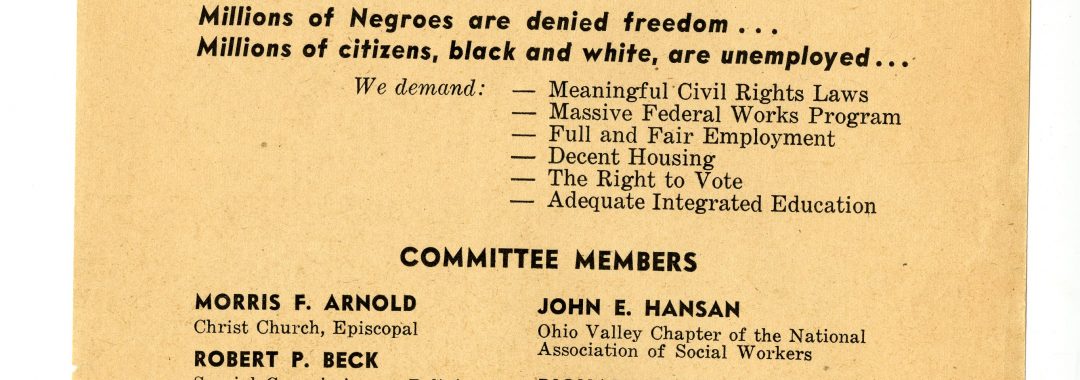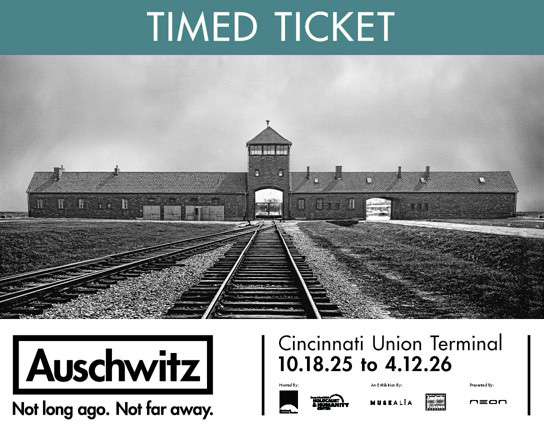
CMC Blog
The Washington March Special: Cincinnati Marches on Washington
By: Christine Schmid Engels, Manager, Archives and Manuscripts
On the evening of Tuesday, August 27, 1963, a train pulled out of Cincinnati’s Union Terminal with 497 of the region’s leaders and supporters on their way to the March on Washington for Jobs and Freedom. Organized on a national level by Bayard Rustin (1912-1987) and A. Philip Randolph (1889-1979), the demands included, “meaningful civil rights laws, massive federal works program, full and fair employment, decent housing, the right to vote, and adequate integrated education.”[i]
People from all over the country organized on a local level to get there. Cincinnati branches of several organizations including the National Association for the Advancement of Colored People [NAACP], the Urban League, the Congress of Racial Equality [CORE], and countless churches worked together to get everyone there. The Rev. L. Richard Hudson led the Cincinnati delegation and was able to get round-trip tickets for $20 (nearly $200 in 2023) from the Chesapeake & Ohio Railway. The train was known as the Washington March Special.[ii]
Though countless people worked to make the trip a success, some key players were Clyde W. Vinegar (1927-2005), President of CORE; Joseph A. Hall (1908-1998), Executive Director of the Cincinnati Branch of the Urban League; and Rev. Richard D. Isler, Executive Director of the Council of Churches of Greater Cincinnati. Each of Cincinnati’s four Black City Council candidates were present on the train: Theodore Berry (1905-2000), Charles Collins (1901-1970), Buford Conley (1928-1963), and Webster Posey (1912-1997). The Council of Churches of Greater Cincinnati wrote a letter to Protestant clergy and urged them to join the march. Over 40 did, as well as at least two priests and two rabbis after Catholic and Jewish leaders also encouraged support of the march and its goals.[iii]
After the march local leadership was able to transfer the enthusiasm into action for Cincinnatians’ concerns at home. Countless organizers worked to keep the momentum up for the Freedom March to Fountain Square on Oct. 27, 1963. Their goals were similar to the national demands, including fair housing and employment, school and police integration, a stop to the use of dogs by the police, and passage of a federal civil rights bill. [iv]
National events like the March on Washington often take up such a large space in collective memory that it’s easy to overlook the people who organized in ways large and small all over the country to make it happen. The train register sheets, which each passenger signed and wrote their addresses on, invite you to look more closely at those individual stories. You can see the different handwriting, various shades of ink, and holes left over from staples as pages were torn off and added together as organizers kept track of everything. Sometimes the paper itself tells a story that goes beyond the words written upon it.
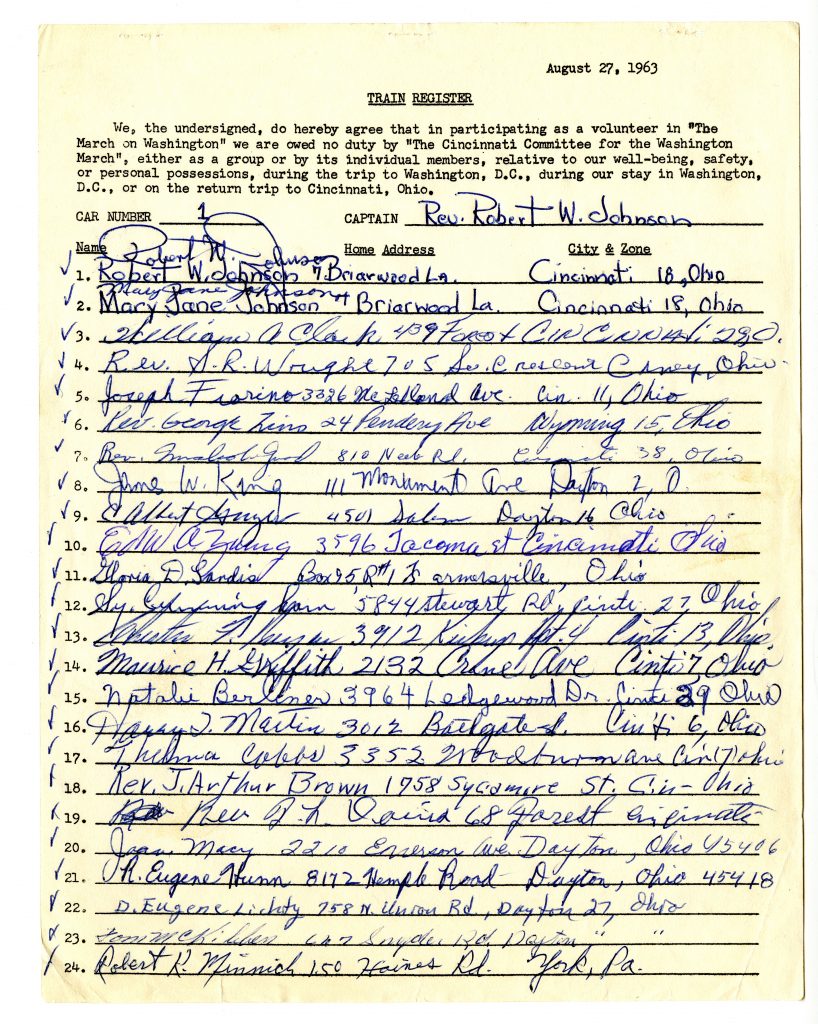
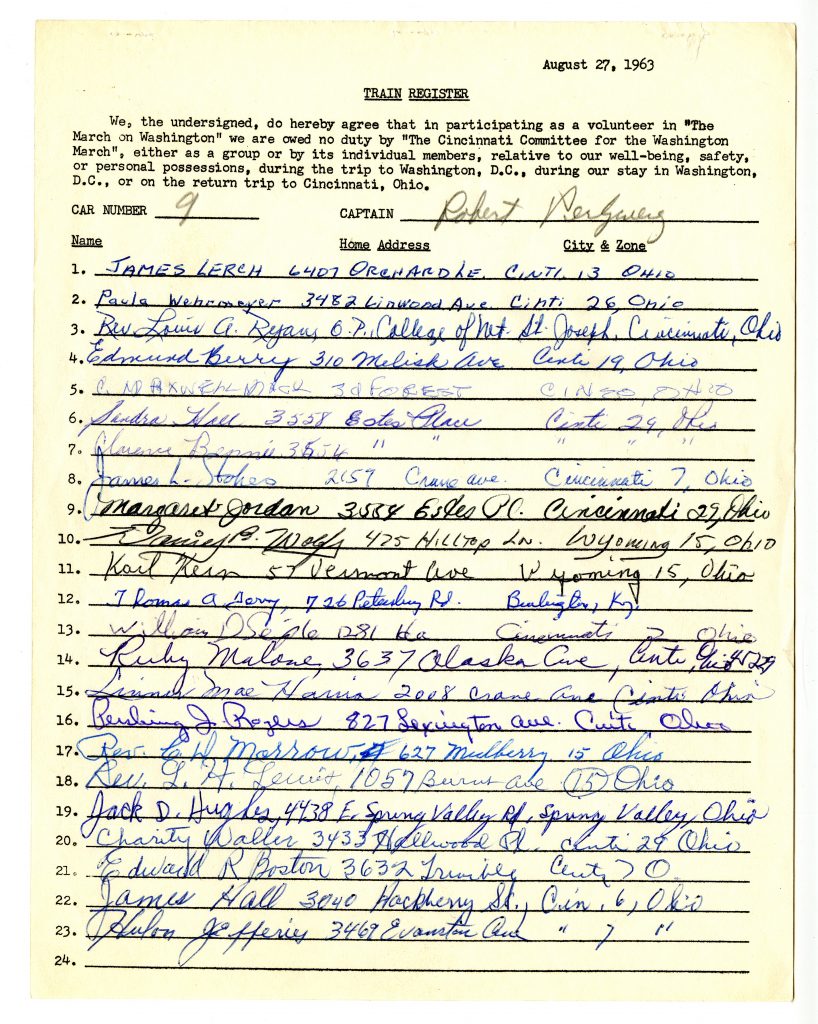
An example of the train register, Aug. 27, 1963. Mss 774, box 5, folder 35; CMC.
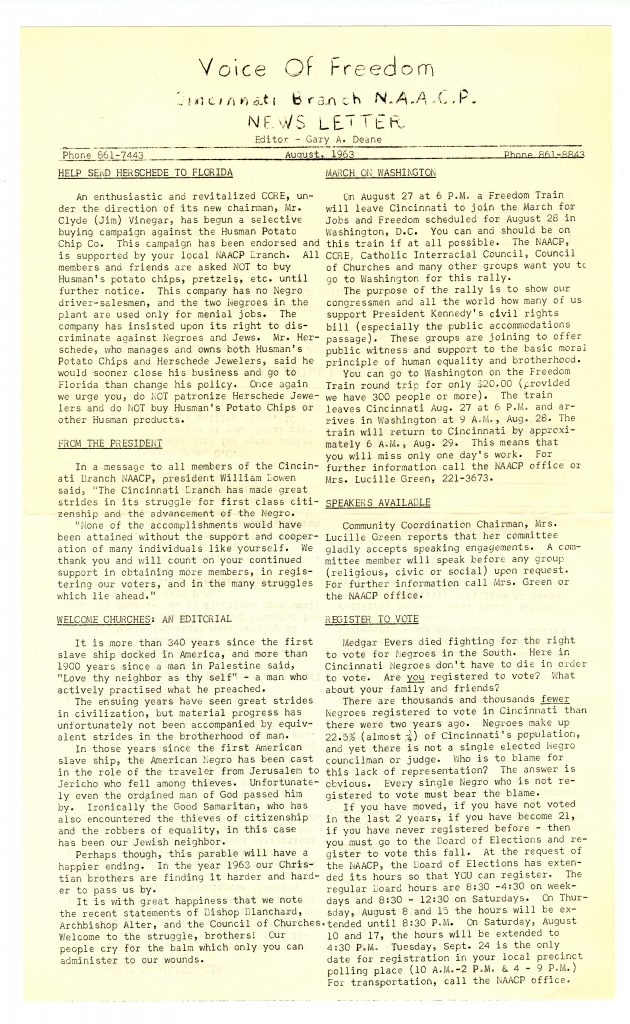
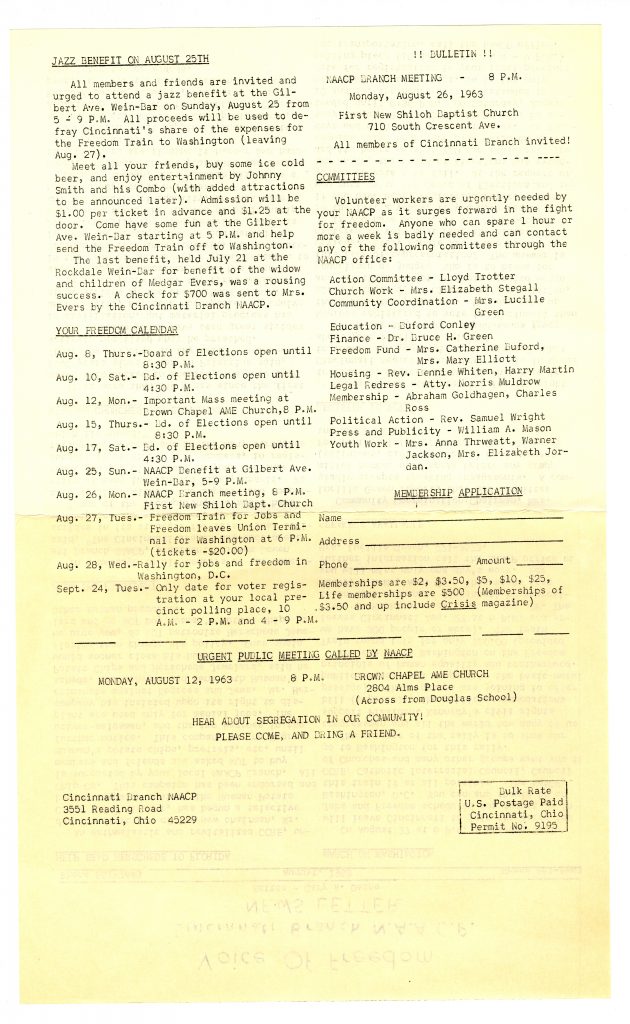
"Voice of Freedom" was a newsletter of the Cincinnati Branch of the NAACP. Mss 774, box 5, folder 35; CMC.
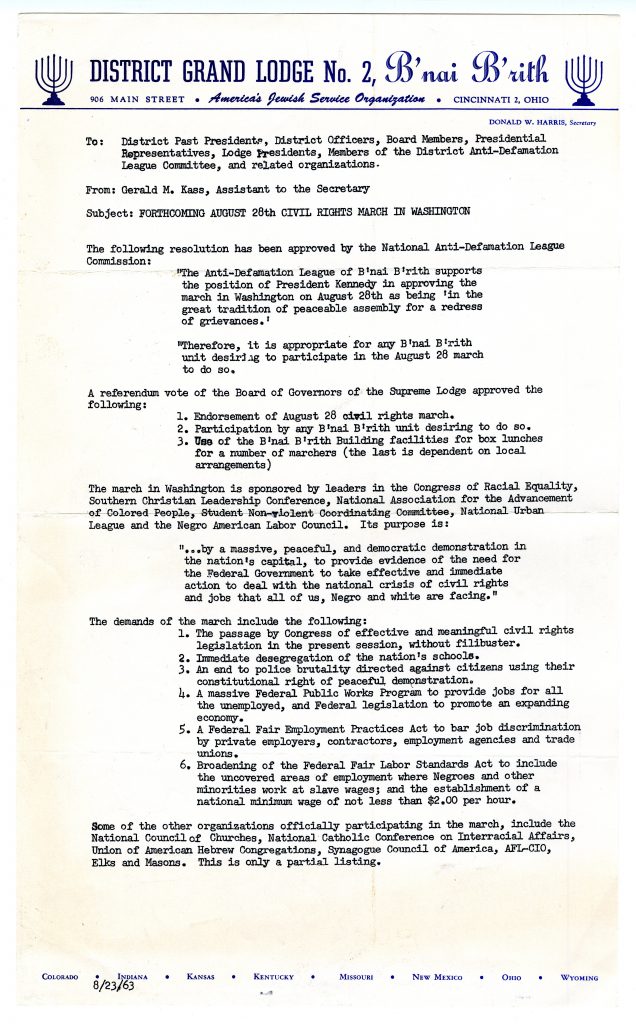
Cincinnati B'nai B'rith Grand Lodge 2 urging support of the March on Washington. Mss 774, box 5, folder 35; CMC.
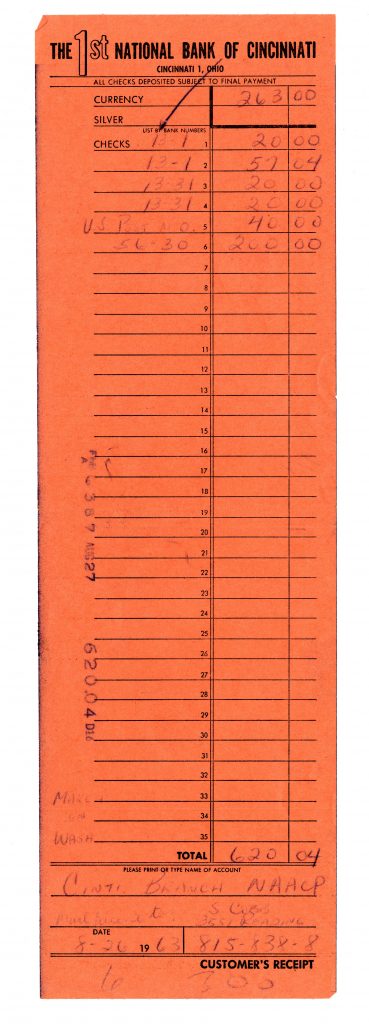
Receipt of funds collected for train fair. Mss774, box 5, folder 35; CMC
To learn more, please visit the online catalog of CMC’s Cincinnati History Library and Archives.
https://searchcollections.cincymuseum.org/public/archive/Portal/Default.aspx?lang=en-US
https://research.cincymuseum.org/librarylinks/archives/mss700-799/Mss774-register.pdf
[i] Flyer, Cincinnati Committee for the Washington March, Cincinnati Chapter of the NAACP Records, Mss 774, box 5, folder 35, Aug. 28, 1963.
[ii] “350 Book Passage on ‘March Special’,” Cincinnati Enquirer, Aug. 23, 1963.
[iii] Letter from Robert P. Beck, Council of Churches of Greater Cincinnati, to Fellow Clergymen, Aug. 5, 1963, Mss VF 4509; Webb, Robert, “The Great March,” Cincinnati Enquirer, Aug. 22, 1993; “Catholic Bishops Urge End to Racial Discrimination,” Cincinnati Enquirer, August 23, 1963.
[iv] Seitz, Ed, “Rights Rally Biggest in City’s History,” Cincinnati Enquirer, Oct. 28, 1963
Museum Admission
Includes Cincinnati History Museum, Museum of Natural History & Science and The Children’s Museum.
| Adult (13+): | |
| Senior (60+): | |
| Child (3-12): | |
| Member Adult: | FREE |
| Member Child: | FREE |
Members receive discounts!
Become a Member today to save on programs, exhibits and films throughout CMC.
Museum Hours
Open Thursday – Monday
10 a.m. to 5 p.m.
Closed Tuesday and Wednesday
Closed Thanksgiving Day and Christmas Day
Member’s-only early entry: Saturdays at 9 a.m.
Customer Service Hours:
Monday – Sunday, 9 a.m. to 5 p.m.
